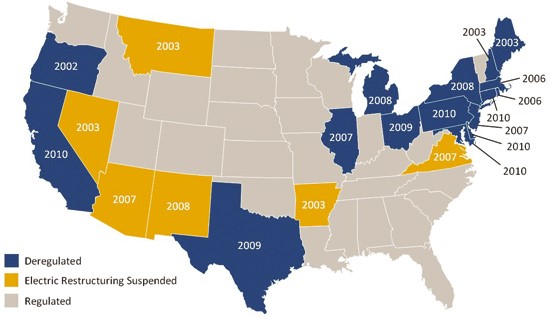500 cities have committed to going big on clean energy this year – now what?
A handful of cities like Georgetown, Texas, and Greensburg, Kansas, have gone 100 percent clean energy, getting all of their electricity from sources like wind, solar or hydropower. Now, over 500 cities are following in their footsteps, committing to go big on clean energy –saving their constituents money and cutting pollution along the way.
First, there’s the nearly 150 mayors who have signed on to the Sierra Club’s “Mayors for 100 Percent Clean Energy” initiative to push their cities to adopt 100 percent targets. Hundreds more signed onto the U.S. Conference of Mayors resolution to go 100 percent clean energy by 2035, on top of many other pledges by cities.
 All told, over 500 municipalities have made big clean energy pledges this year – from major cities like Austin and Los Angeles to small towns like Talent, Oregon, and Vernon, Connecticut.
All told, over 500 municipalities have made big clean energy pledges this year – from major cities like Austin and Los Angeles to small towns like Talent, Oregon, and Vernon, Connecticut.
The list grows longer every day.
Now, those cities just have to figure out how to do it. To help the effort, AWEA has released a new brochure, Wind Works for America’s Cities, which provides information on how cities can purchase clean, affordable wind energy and offers many examples of cities that have already done so.
How does a city get to 100 percent clean energy?
The short answer is, it depends.
If the city has its own utility – and 2,000 cities across the country do – then it’s much easier for to acquire clean energy. This is because a municipal-owned utility (MOU) can purchase electricity on the city’s behalf and deliver it to customers inside that city. In fact, of the seven cities that have already gone 100 percent clean energy, most of them have an MOU. For example, the Burlington Electric Department, the MOU of Burlington, Vermont, signed a power purchase agreement (PPA) with NovatusEnergy last year for 13.5 megawatts (MW) from the Hancock Wind Project in Hancock County, Maine.
Some of the cities that have pledged to go big on clean energy– like Orlando and Palo Alto– have an MOU, but many do not.
So what if a city doesn’t have its own utility?
Then it depends again – on whether the state that city is in has “retail choice.”
Fourteen states and the District of Columbia allow at least some non-utility entities with a large enough electricity demand (such as city governments, corporations or universities) to purchase electricity directly from a generation source like a wind developer. A city in one of these deregulated states can purchase electricity for its own governmental use without having to get it through the local utility that serves its area.
Several cities have taken advantage of this opportunity. For example, the DC government signed a wind PPA to power roughly 35 percent of its buildings with wind energy.
If the city wants to provide clean energy not only to its own facilities but also to its residents – if it wants to be truly 100 percent clean energy – it has to set up an entity that is allowed to sell electricity in the state. This is where community choice aggregation (CCA) comes in.
CCA leverages the collective buying power of electricity users in the area to acquire electricity that’s usually cleaner than what’s otherwise available. San Francisco’s CCA, CleanPowerSF, serves its customers a fuel mix that’s cleaner than that of the investor owned utility in the area, Pacific Gas & Electric.
But what if a city is in a state that does not have retail choice?
Then it gets even trickier. One option could be for a city to enter into a green tariff to procure renewable energy directly from its local utility, if it has a green tariff program. Green tariffs vary in terms of rate structure and how the renewable energy supply is identified; 13 green tariffs in 10 states have been proposed or approved to date.
The city can also sign a virtual PPA with a wind developer. Most often in these cases, the city guarantees the developer will get a certain price for wind energy sold onto the market; if the developer gets less, then the city pays the difference. (If the developer gets more than the guaranteed amount, then the developer pays the city the difference.) In return, the city gets the renewable energy credits (RECs) from the wind project.
There’s no question that there’s a great deal of momentum behind the more than 500 U.S. cities that have pledged to go big on clean energy. They now have to decide how to do it. To learn more about municipal wind and the different ways a city can acquire wind energy, check out this brochure or visit our site on municipal wind.






